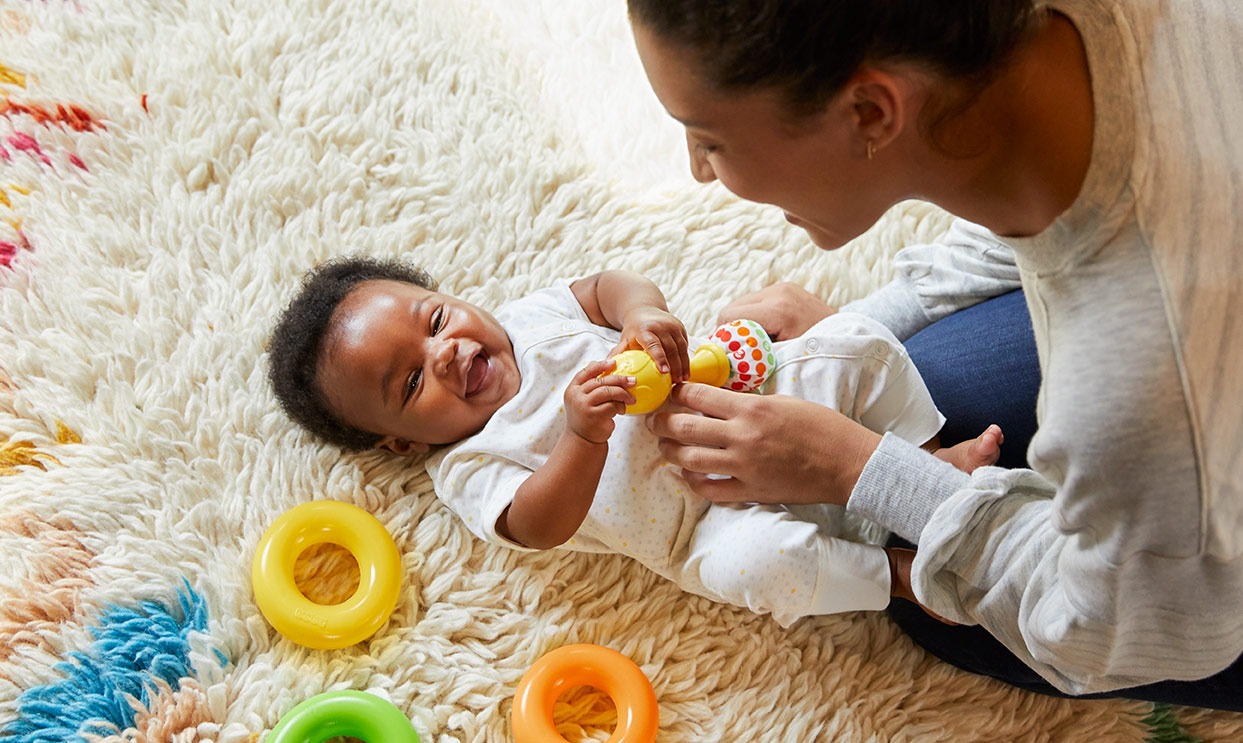Fisher-Price is a brand that produces toys and other products for infants, toddlers, and young children. The brand was founded in 1930 by Herman Fisher, Irving Price, and Helen Schelle, and it has since become one of the most recognizable names in the toy industry.

Fisher-Price is known for its commitment to child development, with a focus on providing toys that promote learning and growth in various areas, such as cognitive, social, and emotional development. The brand has a wide range of products that cater to different age groups, from newborns to preschoolers, and it has continued to innovate and introduce new products over the years.
Some of Fisher-Price’s most iconic products include the Chatter Telephone, the Little People playsets, and the Rock-a-Stack, which have been beloved by generations of children. The brand has also introduced more modern toys and products, such as interactive learning toys and smart devices that cater to the digital age.
Overall, Fisher-Price’s commitment to child development and its reputation for producing high-quality, durable toys have made it a favorite among parents and children alike.
Introduction to Fisher-Price’s focus on safety and quality
Fisher-Price is a well-known brand that produces toys and baby gear. It was founded in 1930 by Herman Fisher, Irving Price, and Helen Schelle, and has been a subsidiary of Mattel since 1993. The company is committed to producing high-quality toys that are safe for children of all ages. Fisher-Price has a long history of innovation in the toy industry, with many of its products becoming classics that are still beloved by children today.

The company has a strict set of safety standards that it follows in the design and production of its toys. Fisher-Price works closely with independent safety experts and organizations to ensure that its products meet or exceed all applicable safety regulations. The company also conducts rigorous internal testing to ensure that its toys are safe for children to use.
Fisher-Price is known for its high-quality products that are designed to withstand the wear and tear of everyday play. The company uses durable materials and construction methods in the production of its toys to ensure that they last for years and can be passed down from generation to generation. Additionally, Fisher-Price offers a range of products that are designed to support children’s cognitive, social, and physical development
Fisher-Price’s safety testing and quality control measures
Fisher-Price has a strong commitment to ensuring the safety and quality of their toys. They have a rigorous testing and quality control process that begins with the design phase and continues throughout production.
The company has a dedicated team of engineers and designers who work to develop toys that meet or exceed all applicable safety standards. They conduct risk assessments and use computer simulations to identify potential hazards and address them before production begins.
Fisher-Price also works with independent third-party testing agencies to verify the safety of their products. These agencies conduct tests on the toys to ensure that they meet all relevant safety standards, including those set by organizations such as the Consumer Product Safety Commission (CPSC) and the European Union (EU).
In addition, Fisher-Price has implemented a number of quality control measures to ensure that their toys are manufactured to the highest standards. They conduct regular inspections of their factories and have a team of quality control inspectors who test samples of toys to ensure that they meet all specifications.
Overall, Fisher-Price’s commitment to safety and quality is evident in their rigorous testing and quality control measures. They strive to ensure that their toys are safe for children to play with and meet the highest standards of quality.
The impact of regulations on Fisher-Price’s toy production
Fisher-Price is committed to exceeding safety standards and regulations set by government bodies, such as the Consumer Product Safety Commission (CPSC) and the European Toy Safety Directive (EN 71). The company conducts rigorous testing on all its products to ensure that they are safe for children of different age groups.
In the United States, Fisher-Price products are tested according to the CPSC’s guidelines, which require testing for physical, mechanical, electrical, and flammability hazards. The company also conducts additional testing to ensure that its toys do not contain harmful substances such as lead, cadmium, and phthalates.
In Europe, Fisher-Price adheres to the requirements of the EN 71 directive, which specifies safety standards for toys. The directive includes guidelines for physical and mechanical properties, flammability, chemical properties, and hygiene. Fisher-Price also complies with the REACH regulation, which restricts the use of certain hazardous substances in consumer products.
Fisher-Price also works closely with third-party organizations to ensure the safety and quality of its products. For example, the company is a member of the Toy Industry Association’s (TIA) Safety Standards and Technical Committee, which develops and updates safety standards for toys. Fisher-Price also participates in the TIA’s Toy Safety Certification Program, which verifies that a toy meets all applicable safety standards.

Conclusion
Fisher-Price’s commitment to safety and quality in toy production is an essential part of its legacy as a brand trusted by parents and loved by children. Through rigorous safety testing and quality control measures, Fisher-Price ensures that its toys meet or exceed regulatory standards and are safe for children to play with. The company’s focus on safety and quality not only helps to protect children but also reinforces the trust that parents have in the brand. Overall, Fisher-Price’s dedication to safety and quality is a cornerstone of its reputation and a key factor in its continued success in the toy industry.



